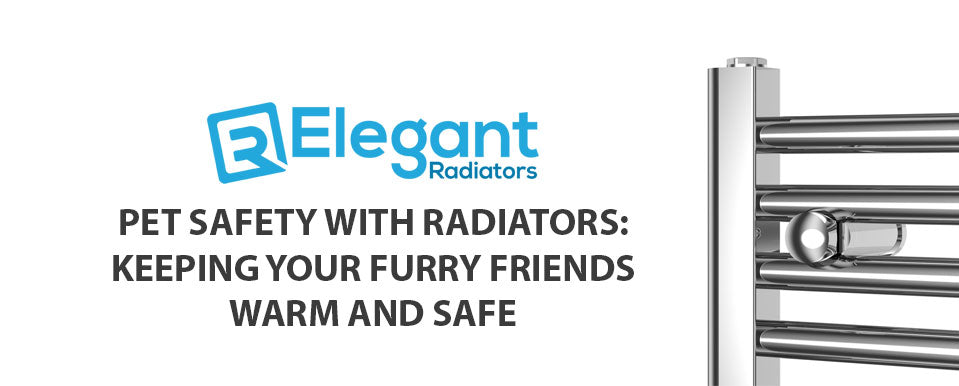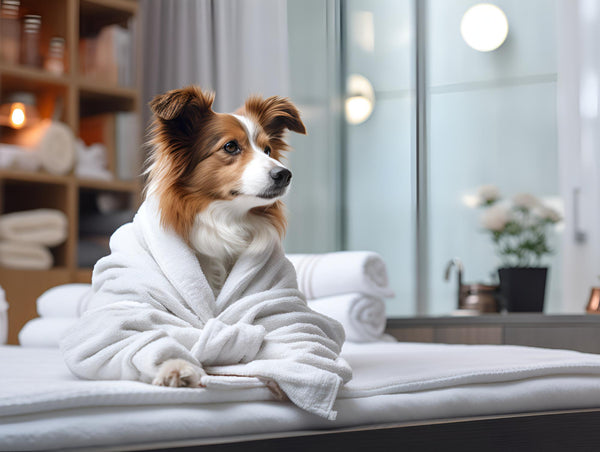Pet Safety with Radiators: Keeping Your Furry Friends Warm and Safe

In the dead of winter, when the cold winds howl outside and frost coats the windows, the warmth of a towel radiator becomes more than simply a comfort; it becomes the heart of a snug, welcoming house. For pet owners, striking a balance between providing a comfortable environment and maintaining the safety and well-being of their cherished animals is critical. This thorough book digs into the important components of radiator safety for pets, providing in-depth insights, practical solutions, and professional advice for keeping your pet's environment warm, pleasant and safe.
Understanding Radiator Hazards for Pets
Our dogs, like us, desire the comfortable embrace of warmth throughout the cooler months. Radiators and heating components serve as focal areas for relaxation and comfort. However, this natural desire for warmth can unintentionally lead to dangers and hazards that, as responsible pet owners, we must prevent. Burns from direct contact with hot surfaces, dehydration from the dry air created by heating systems, and overheating caused by extended exposure to high temperatures are among the most serious hazards. These concerns can be especially severe for our dogs, who may be unaware of the dangers posed by these heat sources.
Safeguarding Against Burns
One of the most important aspects in maintaining pet safety around radiators is to avoid direct contact with hot surfaces. Installing pet-friendly radiator covers is a practical and visually appealing option. These coverings serve two functions: they operate as a barrier, avoiding burns by protecting dogs from direct contact with the radiator, and they blend in smoothly with your home décor, frequently improving it. When picking a radiator cover, be sure that it allows for enough heat circulation. The idea is to maintain the ambient warmth that makes our homes cosy while also ensuring the safety of our pets.

Hydration and Overheating: Maintaining a Balanced Environment
Maintaining a regulated indoor atmosphere is critical to minimising overheating and keeping your dogs hydrated. During the winter, the optimal house temperature for both human and pet comfort is usually between 20 and 22°C. It is critical to keep an eye on this and adjust your heating as needed to keep your dogs' indoor habitat from becoming too warm. To encourage hydration, provide many water stations throughout your house, particularly near heat sources. These stations will remind and encourage your pets to drink frequently, so preventing dehydration.
The Role of Humidifiers in Pet Safety
Using radiators and heating systems throughout the winter typically results in lower interior humidity levels. Dry air can irritate pets' eyes, skin, and respiratory systems. Integrating a humidifier into your heating system can help to lessen these impacts by ensuring that your home's humidity levels are ideal. This innovation helps to keep the air mild on your pet's lungs and skin, creating a more pleasant environment for them to flourish in.
Creating Safe Spaces: The Importance of Heat-Free Zones
While it is necessary to keep our homes warm during the cold months, it is also important to provide cooler, heat-free areas for dogs to retire to. These places provide a safe haven for pets, enabling them to adjust their body temperature and sleep peacefully away from the warmth of the radiators. Designated cooler places can be as simple as a room with reduced heating or a dedicated location away from direct heat sources, supplied with comfortable bedding and toys to make it attractive.
Regular Monitoring: The Key to Safety
Continuous attention is an essential component of pet safety near radiators. Regular checks to monitor the temperature of the radiators and observe your pet's activity around these heat sources are required. This is especially critical for young, old, or medically fragile pets, who may be more susceptible to heat-related illnesses. Monitoring ensures that any potential concerns are discovered and treated as soon as possible, ensuring that your dogs remain secure.
Educating Yourself and Your Family
Understanding the warning symptoms of overheating and dehydration is critical for pet safety. Recognising signs such as increased panting, lethargy, or drooling is critical. These indicators suggest that your pet is in discomfort and that you should take urgent steps to calm them down and review your home's heating plan. Educating yourself and your family on these indicators and how to respond to them may go a long way towards assuring your dogs' safety.
Conclusion: A Warm Home is a Safe Home
The comfort and safety of our dogs are essential for building a happy household environment. By applying the procedures described above, pet owners may enjoy the warmth radiators give while knowing their furry family members are safe. Remember, a little planning and preparation can go a long way towards making the winter months comfortable and safe for everyone in your household.Prioritising pets' well-being in the face of possible radiator risks is more than a responsibility; it is a tribute to the love we have with our animal friends. By implementing these safety measures, we reaffirm our dedication to their well-being and happiness, guaranteeing that the warmth of our houses extends beyond physical comfort to include a deep, caring care for all of its occupants.







